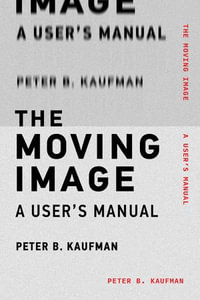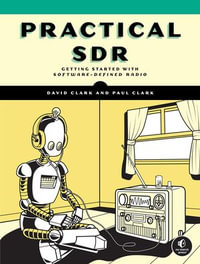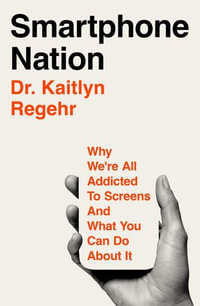
Software Defined Radio
Enabling Technologies
eText | 11 April 2003 | Edition Number 1
At a Glance
eText
$272.79
or
Instant online reading in your Booktopia eTextbook Library *
Read online on
Desktop
Tablet
Mobile
Not downloadable to your eReader or an app
Why choose an eTextbook?
Instant Access *
Purchase and read your book immediately
Read Aloud
Listen and follow along as Bookshelf reads to you
Study Tools
Built-in study tools like highlights and more
* eTextbooks are not downloadable to your eReader or an app and can be accessed via web browsers only. You must be connected to the internet and have no technical issues with your device or browser that could prevent the eTextbook from operating.
Software defined radio (SDR) is one of the most important topics of research, and indeed development, in the area of mobile and personal communications. SDR is viewed as an enabler of global roaming and as a unique platform for the rapid introduction of new services into existing live networks. It therefore promises mobile communication networks a major increase in flexibility and capability.
SDR brings together two key technologies of the last decade - digital radio and downloadable software. It encompasses not only reconfiguration of the air interface parameters of handset and basestation products but also the whole mobile network, to facilitate the dynamic introduction of new functionality and mass-customised applications to the user's terminal, post-purchase.
This edited book, contributed by internationally respected researchers and industry practitioners, describes the current technological status of radio frequency design, data conversion, reconfigurable signal processing hardware, and software issues at all levels of the protocol stack and network.
The book provides a holistic treatment of SDR addressing the full breadth of relevant technologies - radio frequency design, signal processing and software - at all levels. As such it provides a solid grounding for a new generation of wireless engineers for whom radio design in future will assume dynamic flexibility as a given.
In particular it explores
* The unique demands of SDR upon the RF subsystem and their implications for front end design methodologies
* The recent concepts of the 'digital front end' and 'parametrization'
* The role and key influence of data conversion technologies and devices within software radio, essential to robust product design
* The evolution of signal processing technologies, describing new architectural approaches
* Requirements and options for software download
* Advances in 'soft' protocols and 'on-the-fly' software reconfiguration
* Management of terminal reconfiguration and its network implications
* The concepts of the waveform description language
The book also includes coverage of
* Potential breakthrough technologies, such as superconducting RSFQ technology and the possible future role of MEMS in RF circuitry
* Competing approaches, eg all-software radios implemented on commodity computing vs advanced processing architectures that dynamically optimise their configuration to match the algorithm requirements at a point in time
The book opens with an introductory chapter by Stephen Blust, Chair of the ITU-R WP8F Committee and Chair of the SDR Forum presenting a framework for SDR, in terms of definitions, evolutionary perspectives, introductory timescales and regulation.
Suitable for today's engineers, technical staff and researchers within the wireless industry, the book will also appeal to marketing and commercial managers who need to understand the basics and potential of the technology for future product development. Its balance of industrial and academic contributors also makes it suitable as a text for graduate and post-graduate courses aiming to prepare the next generation of wireless engineers.
SDR brings together two key technologies of the last decade - digital radio and downloadable software. It encompasses not only reconfiguration of the air interface parameters of handset and basestation products but also the whole mobile network, to facilitate the dynamic introduction of new functionality and mass-customised applications to the user's terminal, post-purchase.
This edited book, contributed by internationally respected researchers and industry practitioners, describes the current technological status of radio frequency design, data conversion, reconfigurable signal processing hardware, and software issues at all levels of the protocol stack and network.
The book provides a holistic treatment of SDR addressing the full breadth of relevant technologies - radio frequency design, signal processing and software - at all levels. As such it provides a solid grounding for a new generation of wireless engineers for whom radio design in future will assume dynamic flexibility as a given.
In particular it explores
* The unique demands of SDR upon the RF subsystem and their implications for front end design methodologies
* The recent concepts of the 'digital front end' and 'parametrization'
* The role and key influence of data conversion technologies and devices within software radio, essential to robust product design
* The evolution of signal processing technologies, describing new architectural approaches
* Requirements and options for software download
* Advances in 'soft' protocols and 'on-the-fly' software reconfiguration
* Management of terminal reconfiguration and its network implications
* The concepts of the waveform description language
The book also includes coverage of
* Potential breakthrough technologies, such as superconducting RSFQ technology and the possible future role of MEMS in RF circuitry
* Competing approaches, eg all-software radios implemented on commodity computing vs advanced processing architectures that dynamically optimise their configuration to match the algorithm requirements at a point in time
The book opens with an introductory chapter by Stephen Blust, Chair of the ITU-R WP8F Committee and Chair of the SDR Forum presenting a framework for SDR, in terms of definitions, evolutionary perspectives, introductory timescales and regulation.
Suitable for today's engineers, technical staff and researchers within the wireless industry, the book will also appeal to marketing and commercial managers who need to understand the basics and potential of the technology for future product development. Its balance of industrial and academic contributors also makes it suitable as a text for graduate and post-graduate courses aiming to prepare the next generation of wireless engineers.
Read online on
Desktop
Tablet
Mobile
ISBN: 9780470852637
ISBN-10: 0470852631
Published: 11th April 2003
Format: PDF
Language: English
Publisher: Wiley Global Research (STMS)
Edition Number: 1
You Can Find This eBook In
This product is categorised by
- Non-FictionComputing & I.T.Computer Programming & Software DevelopmentSoftware Engineering
- Non-FictionEngineering & TechnologyEnergy Technology & EngineeringElectrical Engineering
- Non-FictionEngineering & TechnologyElectronics & Communications EngineeringCommunications Engineering & TelecommunicationsRadio Technology























